Author: ParaFi Capital
Translated by: Felix, PANews
In less than 18 months, Ethena has become a cornerstone of DeFi and CeFi infrastructure.
Ethena's USDe has become the fastest dollar asset to reach a supply of 5 billion. With Ethena's rapid growth, this article will delve into the mechanisms of the protocol, focusing on the following three aspects:
- Peg Resilience: To what extent has Ethena maintained its peg during significant market downturns?
- Yield Profile and System Support: What changes have occurred in the asset composition and yield drivers of the protocol so far this year?
- Capacity Constraints: Is Ethena approaching the DeFi TVL or open contract limits?

USDe has experienced extreme market volatility, including 8 instances of Bitcoin dropping over 10%, as well as the largest crypto hack in history. Since its launch, the protocol has processed $3.3 billion in redemptions, but in the past year, the deviation of USDe from the dollar peg has not exceeded 0.5%. Since "Liberation Day" (Note: Trump referred to April 2 as "Liberation Day," announcing a global tariff plan), the protocol has undergone $409 million in redemptions.
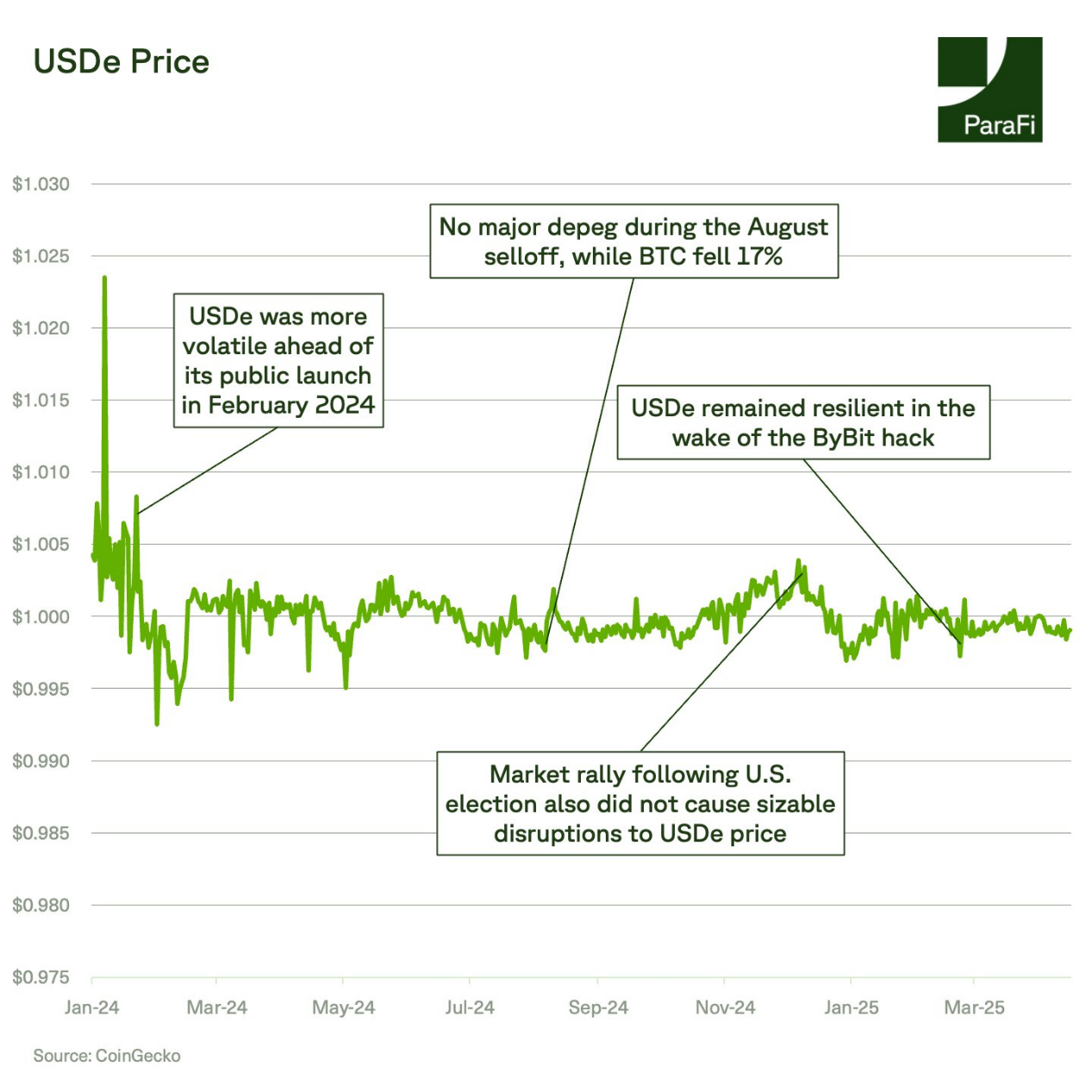
sUSDe has become the yield benchmark for DeFi—traditional financial (TradFi) institutional investors may increasingly focus on this metric to assess risk appetite and market sentiment.
Ethena's yield mechanism is rooted in its structural advantages.
A significant portion of the sUSDe APY comes from the funding rates used to hedge spot exposure in basis trading. Historically, these funding rates have been positive. For reference, 93% of the days in the past year have been positive.
The yield that sUSDe can provide often exceeds the funding rates of BTC, thanks to two key factors:
- Not all USDe is staked, meaning yields are concentrated among a smaller supply group;
- Ethena's custody framework supports cross-collateralization, optimizing capital efficiency. Currently, only 43% of USDe is staked, the lowest ratio since August.
In the past six months, the average yield of sUSDe has been 12.3%, far exceeding the 8.8% savings rate of Maker/Sky and the 9.2% funding rate of BTC.
Notably, Ethena operates only in a high-interest rate environment where the current federal funds rate is above 4%. Given that sUSDe yields should be negatively correlated with real interest rates, a decline in real rates may increase demand for leveraged crypto assets, thereby pushing up funding rates and subsequently increasing sUSDe yields.
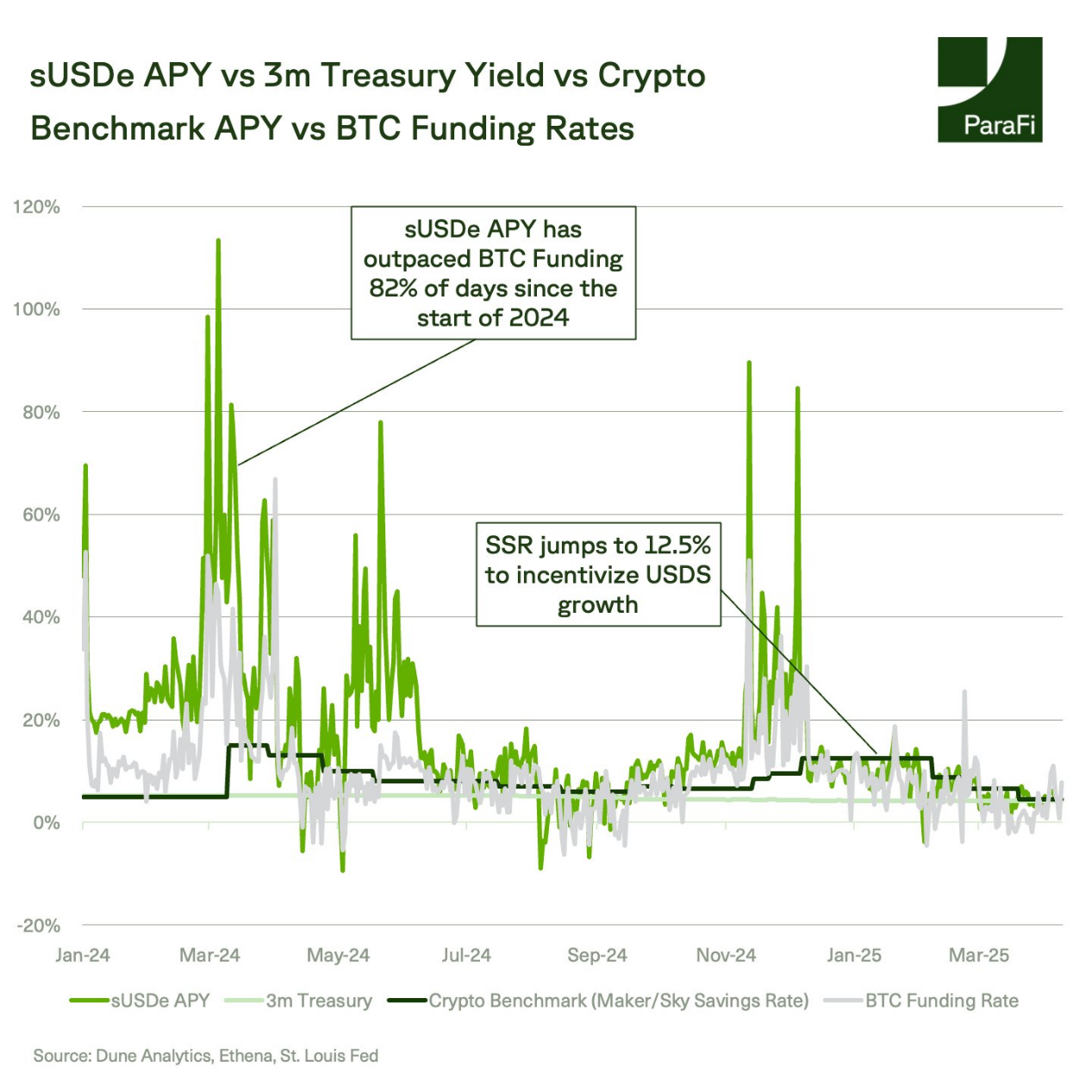
Ethena achieves its yield goals through dynamic collateral management. Depending on the yield environment, Ethena strategically shifts between funding rate arbitrage, stablecoins, and treasury yields.
In December 2024, Ethena launched USDtb, a stablecoin supported by BlackRock's BUIDL product, with a supply exceeding $1.4 billion.
Currently, 72% of Ethena's collateral is allocated to liquid stable assets, a significant change from the end of 2024 when 53% of collateral was allocated to BTC and 28% to ETH. This shift reflects a decline in funding rates relative to Sky and treasury yields.
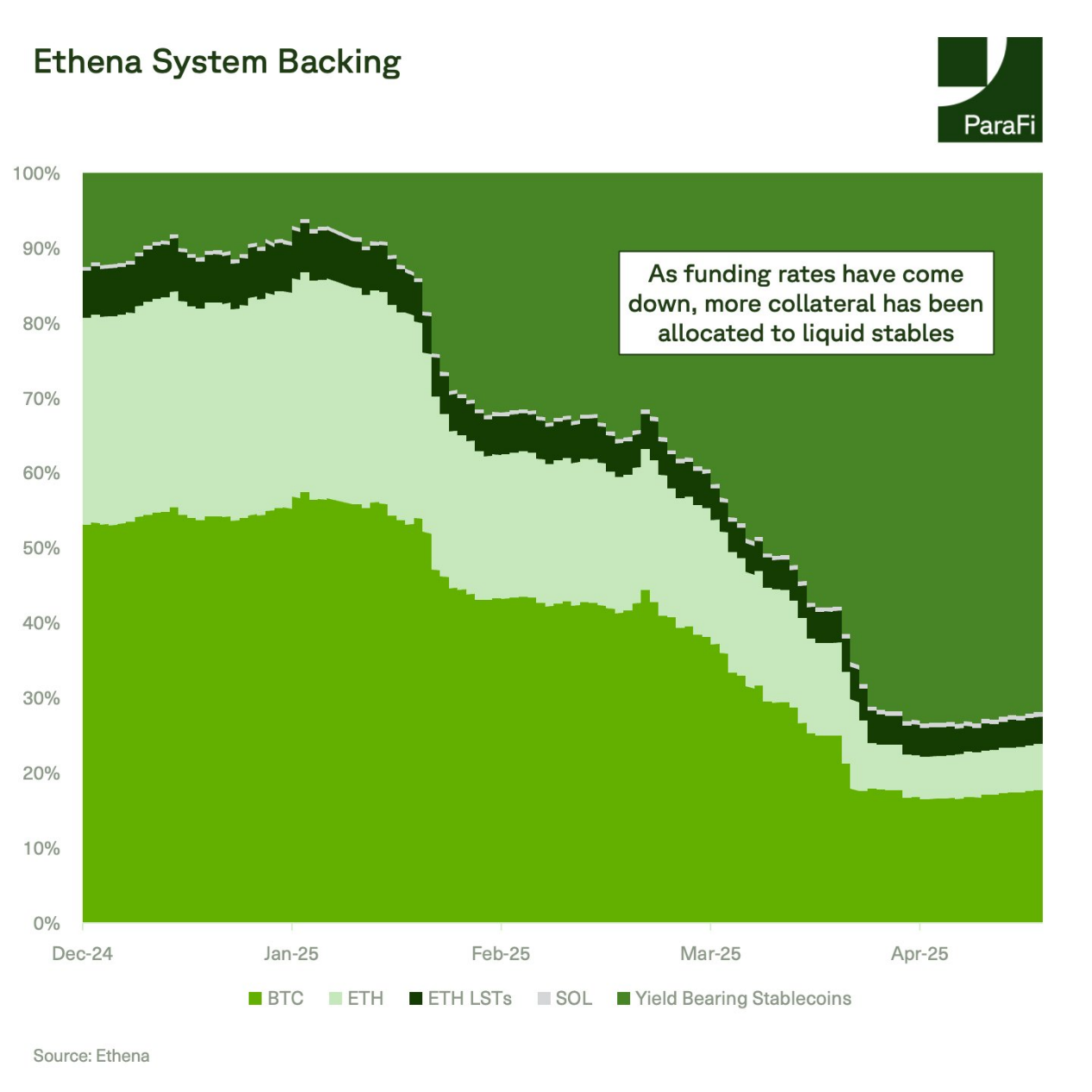
In the early stages of its launch, capacity constraints were a major issue.
Currently, Ethena's supply is approximately $5 billion, with its total TVL accounting for only 12% of the open contracts for Bitcoin, Ethereum, and Solana futures. This is a relatively conservative measure, as not all of Ethena's collateral is linked to perpetual contracts.
During periods of explosive growth in open contract volume, such as at the end of 2024, even if Ethena's supply reaches $6 billion, its market share would only be 14%.
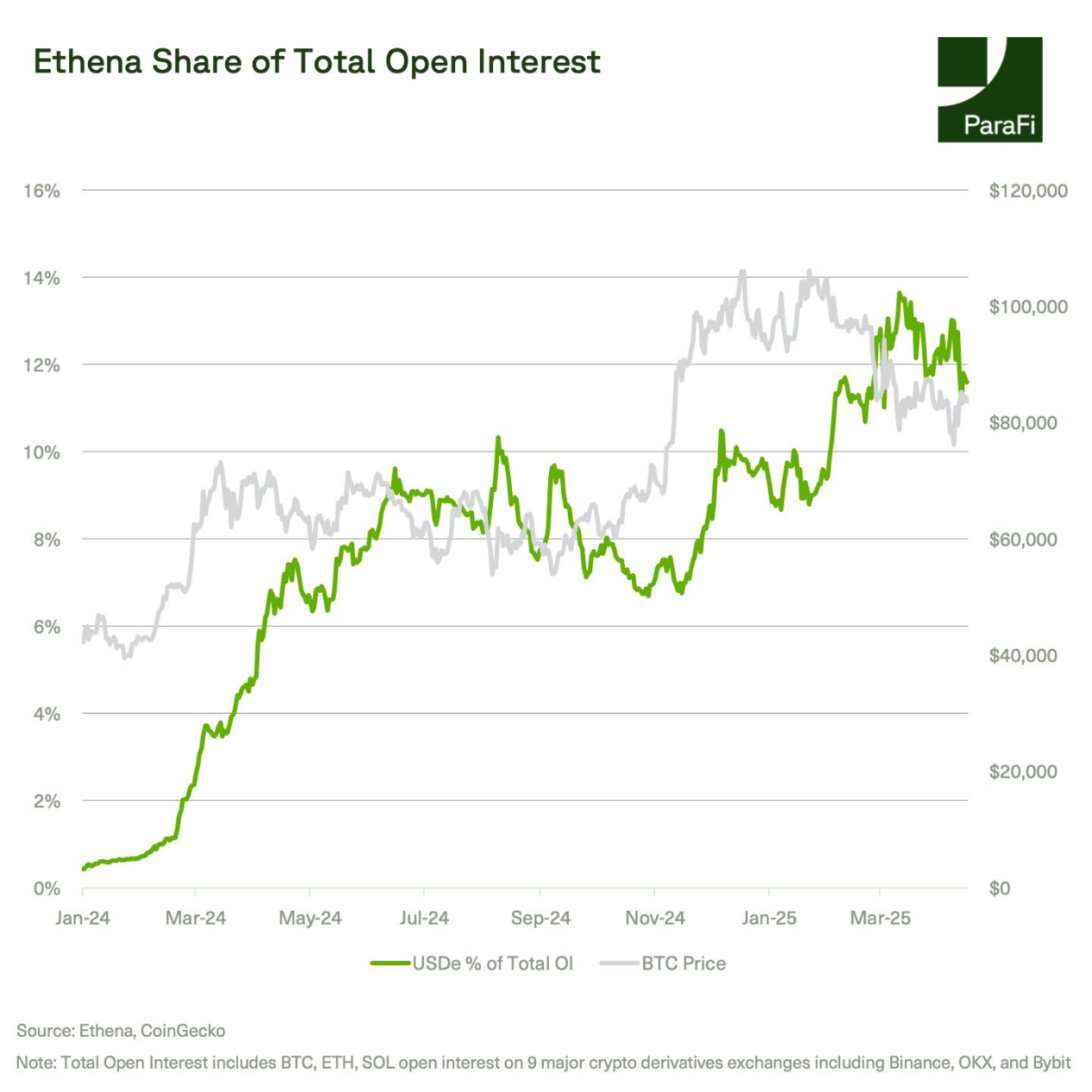
Ethena has solidified its position as a cornerstone of DeFi, with USDe and sUSDe deeply integrated into the entire ecosystem.
USDe alone contributes approximately 60% of Pendle's TVL and about 12% of Morpho's TVL. Since its launch, Ethena's share of DeFi TVL has been increasing, reaching about 6% in March of this year.
Although DeFi TVL has dropped 23% so far this year, in line with recent price trends, and ByBit suffered a hack in February, USDe's TVL has only decreased by 17%.
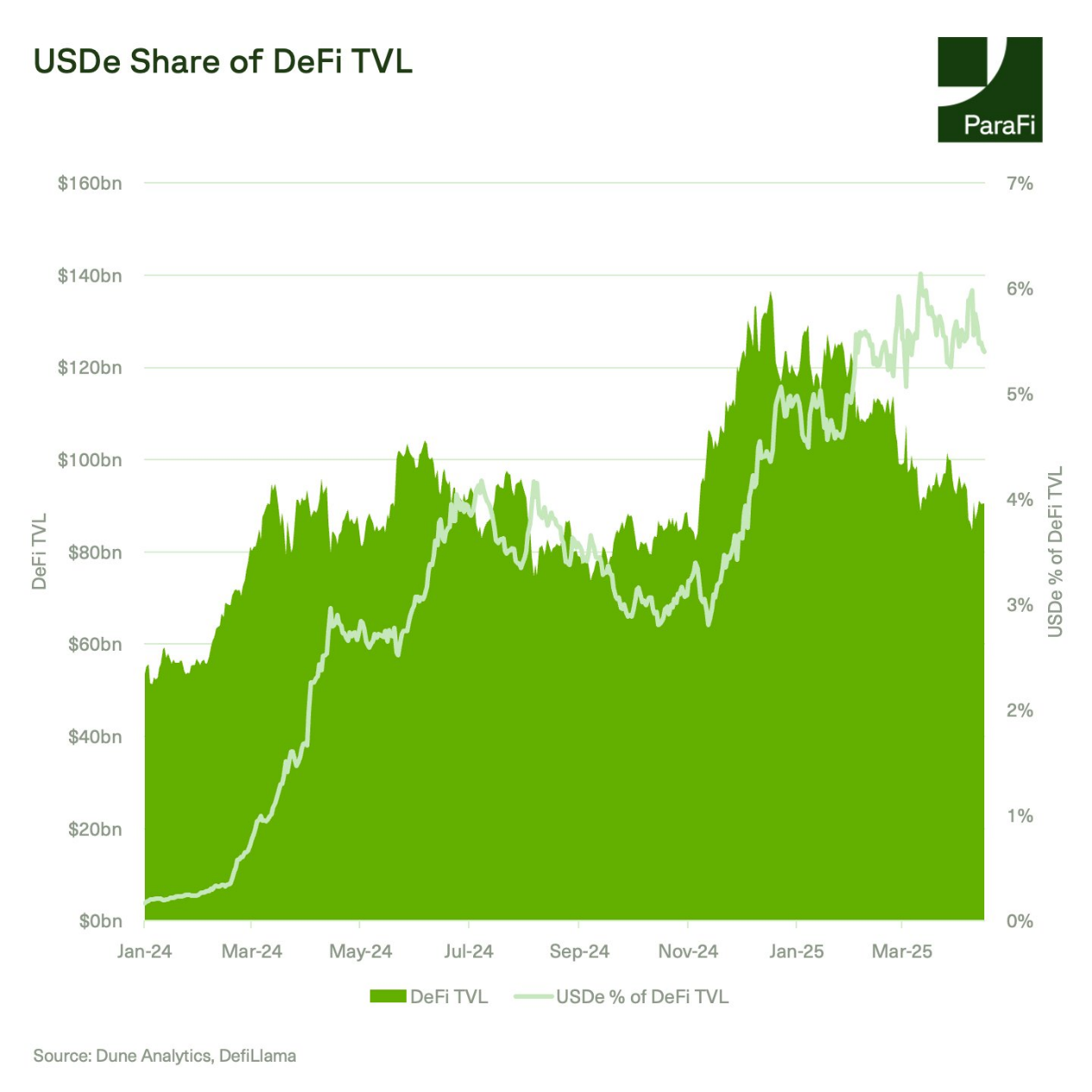
What opportunities and risks will be the focus in the future?
- USDe supply in a negative funding rate environment
- Exchange operational risks
- Growth and integration of USDtb supply
- Institutional adoption of iUSDe
- Launch of Ethena's Converge
- Use cases for USDe payments
Related reading: A Comprehensive Interpretation of Ethena: A New Generation of Crypto Federal Reserve
免责声明:本文章仅代表作者个人观点,不代表本平台的立场和观点。本文章仅供信息分享,不构成对任何人的任何投资建议。用户与作者之间的任何争议,与本平台无关。如网页中刊载的文章或图片涉及侵权,请提供相关的权利证明和身份证明发送邮件到support@aicoin.com,本平台相关工作人员将会进行核查。




